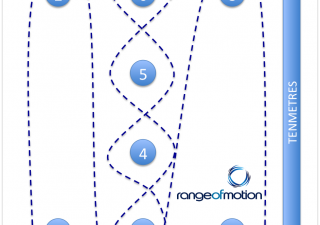Agility requires a productive application of force to create movement and is highly dependant on dynamic balance. Dynamic balance is the ability to maintain equilibrium when moving. It requires timing to constantly modify the position and motion of the centre of mass relative to the base of support.
The research on agility and agility training is considerable.
Young et. al. found that training straight line sprints caused no improvement in agility tests, while agility training caused no improvement in sprint times. Designated agility training (involving direction changes) however did improve agility tests – lending evidence to the need for specialised agility training. Walklate et. al. found similar results in badminton players.
A comparison of agility and vertical leap ability by Barnes et. al. found a positive correlation, perhaps caused by the shared requirement to generate a ground reaction force by both direction changes and vertical leaps. This would suggest training these two elements would benefit each other.
In comparisons of acceleration, speed and agility, Little et. al. “…concluded that acceleration, maximum speed, and agility are specific qualities and relatively unrelated to one another. The findings suggest that specific testing and training procedures for each speed component should be utilized when working with elite players.” Taskin and Halil found that circuit based training has a postive effect on agility test results – providing evidence for the efficacy of a GPP (general physical preparedness) program on multiple elements of fitness. Similar positive correlations were found by Miller et. al. in atheltes who utilised plyometric training to improve agility.
A reason for the improvement in tests of agility following agility training has been proposed by Edward et. al., who found that agility training improves the time taken for the central nervous system to cause a muscle to activate. This faster muscle activation improves the abliity to rapidly change body position.
There follow a series of agility tests that cover a wide breadth of agility requirements and should thus form the mainstay of agility training.
Illinois Agility Test:

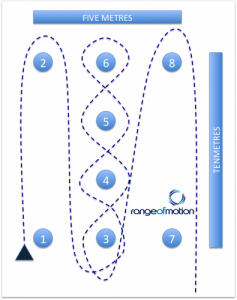
- Begin face down on the ground with hands near shoulders.
- On ‘go’, jump to your feet and follow the directions indicated by the dotted lines.
- Start from cone seven on alternate attempts.
Pro Agility Shuttle:

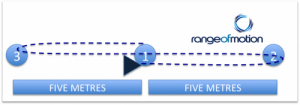
- Begin with one hand touching cone one.
- Sprint to touch cones two.
- Sprint to touch cone three.
- Sprint back through the start/finish line indicated by cone one.
- Alternate starting direction on alternate attempts.
Short Shuttle:

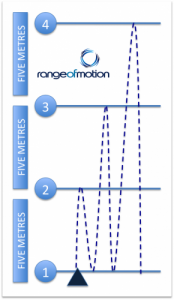
- Begin standing on the start line.
- Sprint five metres up and back.
- Sprint ten metres up and back.
- Sprint 15 metres up and back.
Three Cone Drill:

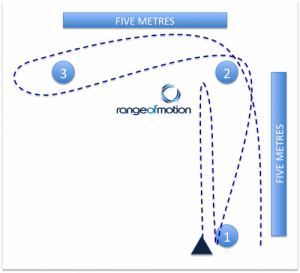
- Begin standing at cone one.
- Sprint to touch cone two.
- Sprint to touch cone one.
- Run around cone two.
- Run a figure eight around cone three.
- Run around cone two and back to the start line.
- Complete a mirror image of the course on alternate attempts.
T Test:

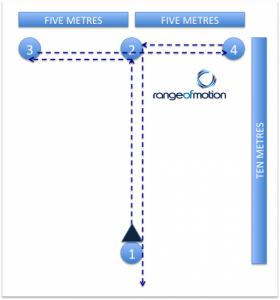
- Begin standing at cone one.
- Sprint and touch cone two.
- Shuttle sideways left to touch cone three.
- Shuttle sideways right to touch cone four.
- Shuttle sideways left to touch cone two.
- Run backwards passed the start/finish line.
AFL Agility Run:

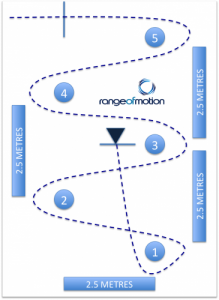
- Begin from a standing position on the start line.
- Weave through the cones as indicated by the dotted line.
Evidence shows that the best way to improve agility is to practice agility. Therefore the best way to improve agility performance on a wide variety of tests is to train agility performance by using these tests

